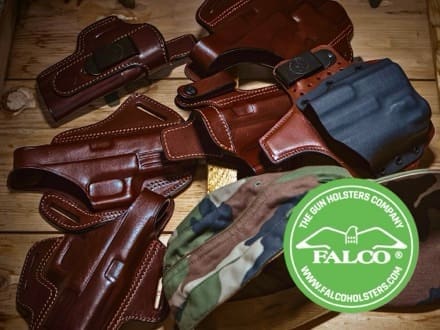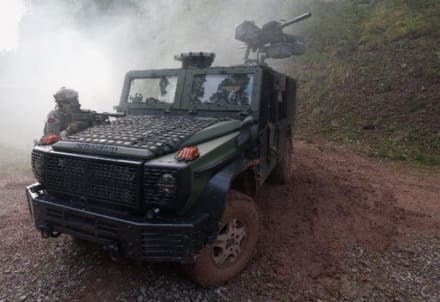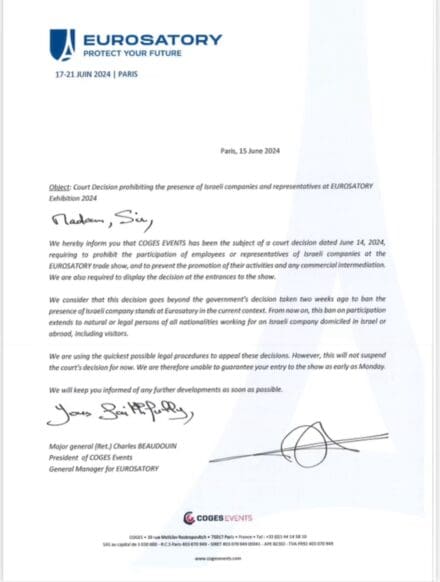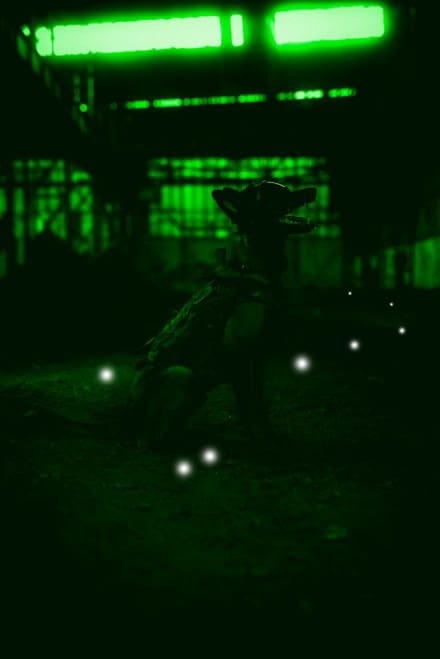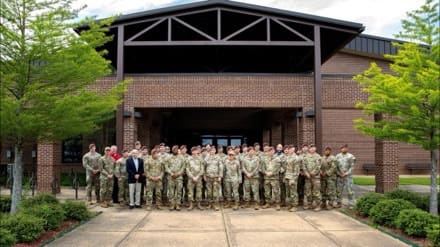
FORT MOORE, Ga. — Security Force Assistance Command conducted a tabletop experiment at the Maneuver Battle Lab to prepare for future conflicts and warfighting needs from May 13-17, 2024. It brought advisors together from 1st, 2nd, 3rd and 4th Security Force Assistance Brigades to evaluate and enhance their operational capabilities for 2030 and beyond, focusing on multi-domain operations and large-scale combat readiness during competition, crisis and conflict.
The primary goal of this exercise was for advisors to identify operational gaps and friction points in the current doctrine or structure to enhance readiness by providing improvement solutions. This insight will guide decision-making, optimize resource allocation and refine training and doctrine to foster continuous improvement and preparation for advisors in real-world scenarios.
“We took a deep look in terms of what multi-domain capabilities we would need to enable partner foreign security forces at the operational level, so large-scale formations and multi-domain operations, throughout large-scale combat operations,” said Lt. Col. Mark Morrison, Security Force Assistance Command strategist. “It was a great opportunity to pull Soldiers from the captain-led team level up to the brigade level to understand what capability gaps exist in the SFAB formation and to be able to close those gaps, so SFAB 2030 is capable of performing our wartime role.”
During the experiment, mentors threw out all sorts of scenarios to ensure advisors were ready for anything they might experience in competition, crisis and conflict situations.
This comprehensive approach ensures SFABs can maintain national security and support global stability.
“We incorporate lessons learned from all parts of doctrine, organization, training, material, leader development, personnel, facilities and policy changes,” stated Morrison. “With the training changes, we can implement some of them ourselves and mirror our signature validation exercise, Operation Combined Victory to incorporate some of these lessons learned so we close the gap through training.”
Our advisors must be able to navigate different environments — established through understanding the battle space.
Moving from large-scale combat operations to multi-domain operations, the use of SFABs will be critical to combatant commanders and the SFABs’ use on the battlefield,” said Maj. Jeremy Hillyard, Maneuver Battle Lab simulations officer. “Any exercise that SFABs can do as we transition from competition, crisis to a full conflict phase will only benefit planners going forward, so combatant commanders and divisions commanders in 2030 know how to use SFABs properly and know their capabilities.”
Participants formed small working groups of advisors to discuss detailed scenario analysis, examining potential outcomes and solutions.
“Every brigade does something different because they’re somewhere different, so seeing how they do things is very different from how my brigade does things, and it’s very challenging sometimes to understand how that makes sense to them,” said Capt. Javier Diaz Martinez, fires direction officer from 4th battalion, 4th SFAB.
“But, getting yourself in their shoes and seeing what they do and where they do it starts to make sense, and it’s sometimes even the better plan.”
The simulated scenarios included cyber-attacks, conventional warfare, and logistical challenges – simulating a wide range of threats to identify and address any gaps or friction points in current operational plans.
The Air Force’s participation demonstrated how crucial it is to work together during conflicts. By teaming up with other military branches, we improve our readiness, response capabilities, and effectiveness to achieve our goals with a unified approach.
U.S. Air Force Capt. Andrea Pangrac, logistics air advisor from the 818th Mobility Support Advisory Squadron, highlighted the value of joint solutions and collaboration across different military branches. “The [tabletop exercise] ultimately embodies not only the commitments advisors in the U.S. have with our regional partners but also across the sister services to enhance trust and transparency and create cooperative and collaborative solutions,” she added.
The experiment highlights the important role of an advisor network, a unity of effort across echelons.
Capt. Pangrac mentioned the value of the tabletop exercise in conditioning advisors to think innovatively and strategically.
“It was a phenomenal experience. This experiment prepares us as advisors to operate effectively by conditioning us to think outside of the box, to think about what we weren’t thinking about in existing doctrine and our existing tactics, techniques and procedures,” she explained.
After the simulated scenarios, mentors reviewed how the participants performed and how well the strategies worked. Guest speakers and mentors offered valuable feedback and pointed out areas where they could improve.
“I think that when you look at the SFABs now, and in the future, they are a very important component to the combatant commander, but more importantly, I would say to the Army commander because they can bring a lot of information and systems to the fight,” said Anthony Lieto, U.S. Army Peacekeeping and Stability Operations Institute.
“They can assess, assist and liaise where the theater commander needs that influence.”
For more information on the SFABs or to volunteer, visit the Security Force Assistance Brigade site on Army.mil.
By SPC Cristina Gomez


